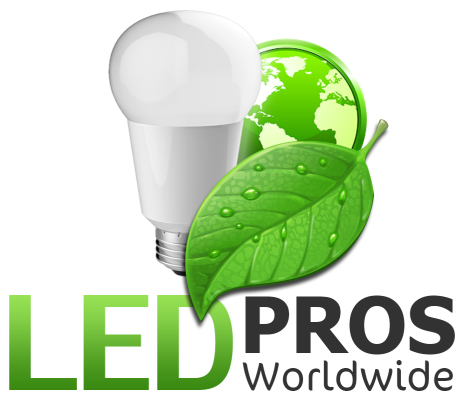Technology and safety have transformed the aviation sector throughout the decades. Aviation Warning Light Types have been a key safety enhancement. Aircraft obstruction lights are strategically placed on tall buildings, structures, and, most importantly, airports and communication towers. This article will discuss how aviation warning lights are helping millions of people fly safely and efficiently.
The Role of Aviation Warning Lights
Ensuring Visibility
Aviation warning lights improve tall structure visibility in low light. Tall structures, communication towers, wind turbines, and airport infrastructure might endanger low-flying aircraft, especially at night or in bad weather. Aviation warning lights with high-intensity LEDs create bright, pulsating beams that reduce crashes by making these structures visible to pilots. Read more about How aviation warning lights are making a difference in the aviation industry here.
Collision Avoidance
Aviation safety requires aircraft obstacle lights. Their protection is vital for aircraft and infrastructure. These commercial lights notify pilots of tall structures so they can change their flight route for safe passage and reduced accident risk.
Regulatory Compliance
Aviation authorities worldwide require warning lights. These regulations require structures that may block air traffic to have proper lighting. Compliance with these standards is legal and shows the aviation industry’s safety commitment. Read more about What you need to know about LED aircraft warning lights here.
Technological Advancements
LED Technology
LEDs have changed aircraft warning lights. LEDs are energy-efficient, durable, and bright, making them suitable for aviation applications. LED bulbs last longer and use less energy than conventional lighting, lowering aviation infrastructure expenses.
Remote Monitoring
Modern aviation warning light systems are often equipped with remote monitoring capabilities. This technology allows operators to remotely monitor the status of lights, receive real-time alerts in case of malfunctions, and schedule maintenance proactively. Remote monitoring enhances the reliability and effectiveness of these lights, reducing downtime and ensuring continuous safety.
Integration with Air Traffic Control
Integration of aviation warning lights with air traffic control systems has become increasingly common. This integration enables real-time coordination between pilots and air traffic controllers, ensuring that flight paths are adjusted as needed when approaching structures with obstruction lights. This level of automation enhances safety and reduces the workload on pilots during critical phases of flight.
Environmental Considerations
Light Pollution Mitigation
The aviation industry has recognized the importance of minimizing light pollution caused by aviation warning lights. By using advanced optics and dimming capabilities, these lights can be more focused and less intrusive to surrounding communities while still serving their safety purpose.
Energy Efficiency
The transition to LED technology has significantly reduced the energy consumption of aviation warning lights. This shift aligns with global efforts to reduce energy consumption and greenhouse gas emissions, contributing to a more sustainable aviation industry.
FAQs
Q1: What are the different types of aviation warning light types?
Red, white, and red-white aircraft warning lights are the main types. White lights are used for daylight visibility, while red lights are used at night. Red-white lights are used for the continual marking of structures.
Q2: How do aviation warning lights reduce bird collisions?
Aviation warning lights, particularly red lights, can help reduce bird collisions by alerting birds to the presence of structures during nighttime flights. Birds tend to avoid illuminated areas, thus minimizing the risk of collisions with tall structures.
Q3: Are aviation warning lights required for all tall structures?
The requirement for aviation warning lights depends on factors such as the height of the structure and its proximity to airports or flight paths. Aviation authorities set regulations that determine which structures require these lights. Generally, structures taller than 200 feet are subject to these regulations.
Q4: Can aviation warning lights be dimmed or turned off during certain hours?
Some aviation warning lights have dimming capabilities to reduce light pollution during nighttime hours. However, complete deactivation of these lights is typically not allowed due to safety regulations. Dimming is done to balance safety concerns with environmental considerations.
Q5: Are there international standards for aviation warning lights?
Yes, international standards for aviation warning lights exist, primarily set by the International Civil Aviation Organization (ICAO) and the Federal Aviation Administration (FAA) in the United States. These standards ensure uniformity and consistency in the use of aviation warning lights worldwide.
Conclusion
Safety is paramount in the ever-changing aviation sector. Aviation warning lights now protect aircraft and infrastructure due to their improved visibility, collision prevention, and technology. Energy efficiency and light pollution reduction make these lights environmentally sustainable and meet international requirements. As aviation evolves, aircraft warning lights will remain vital to global air transport safety and efficiency.
In summary, aviation warning lights:
- Ensure visibility of tall structures.
- Aid in collision avoidance.
- Comply with strict regulatory standards.
- Benefit from technological advancements like LEDs and remote monitoring.
- Integrate with air traffic control systems for enhanced safety.
The aviation industry’s commitment to safety and technical advances ensure that aircraft warning lights will continue to improve the industry.
Buy Direct and Save $$$ – All of our lighting fixtures ship factory direct to your facility. Call sales toll-free (1-844-533-7767)
[gravityform id=”1″ title=”true” description=”true”]
